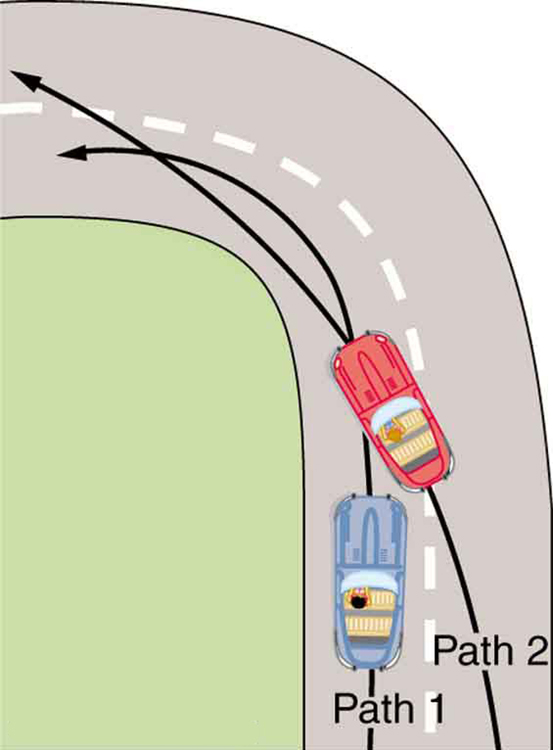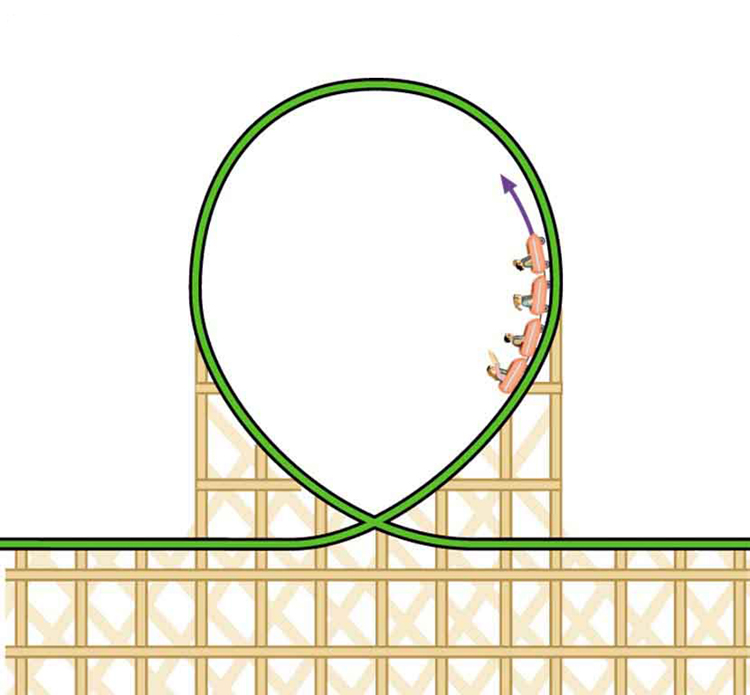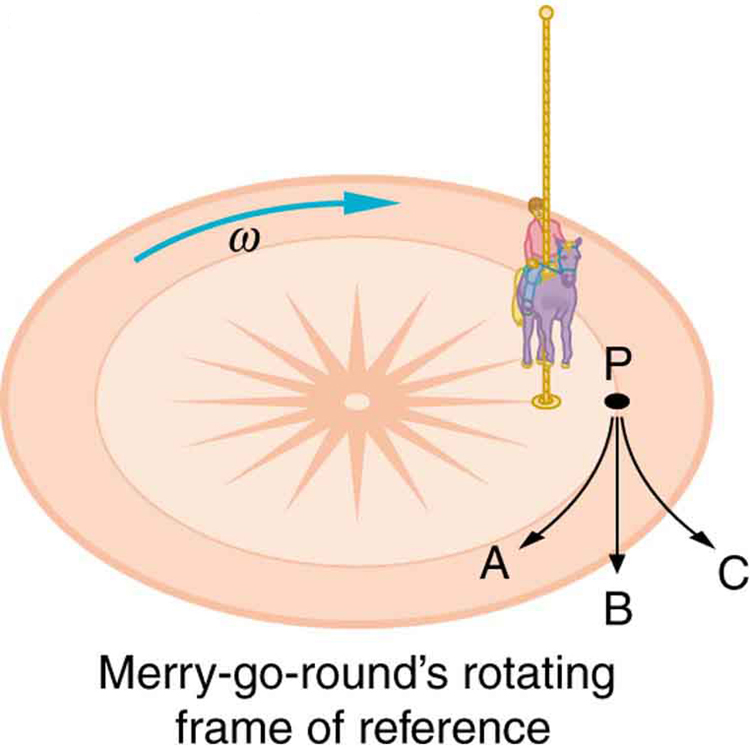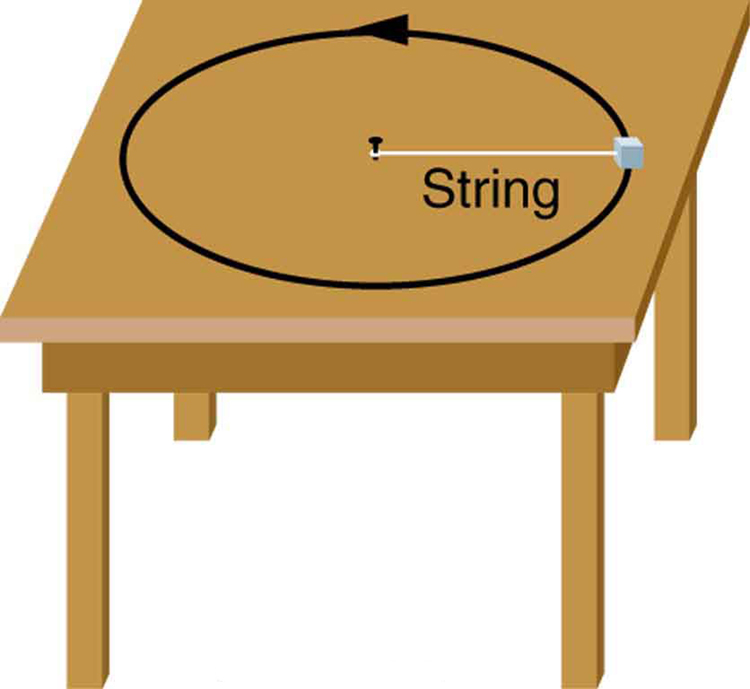Chapter 7: Angular Kinematics
Conceptual Questions
7.1 Rotation Angle and Angular Velocity
- There is an analogy between rotational and linear physical quantities. What rotational quantities are analogous to distance and velocity?
- *A baseball bat is swung. Do all points on the bat have the same angular velocity? The same linear speed?
Solution: They have the same angular velocity. Points further out on the bat have greater tangential speeds.
7.2 Angular Acceleration
- *If a rigid body has a constant angular acceleration, what is the functional form of the angular velocity in terms of the time variable?
Solution: straight line, linear in time variable -
*If a rigid body has a constant angular acceleration, what is the functional form of the angular position?
-
*If the angular acceleration of a rigid body is zero, what is the functional form of the angular velocity?
Solution: constant
7.3 Centripetal Acceleration
- Can centripetal acceleration change the speed of circular motion? Explain.
- *Can tangential acceleration change the speed of an object undergoing circular motion?
Solution: yes
7.4 Centripetal Force
- If you wish to reduce the stress (which is related to centripetal force) on high-speed tires, would you use large- or small-diameter tires? Explain.
- Define centripetal force. Can any type of force (for example, tension, gravitational force, friction, and so on) be a centripetal force? Can any combination of forces be a centripetal force?
- If centripetal force is directed toward the center, why do you feel that you are ‘thrown’ away from the center as a car goes around a curve? Explain.
- Race car drivers routinely cut corners as shown in the figure. Explain how this allows the curve to be taken at the greatest speed.

Two paths around a race track curve are shown. Race car drivers will take the inside path (called cutting the corner) whenever possible because it allows them to take the curve at the highest speed. - A number of amusement parks have rides that make vertical loops like the one shown in the figure. For safety, the cars are attached to the rails in such a way that they cannot fall off. If the car goes over the top at just the right speed, gravity alone will supply the centripetal force. What other force acts and what is its direction if:
(a) The car goes over the top at faster than this speed?
(b)The car goes over the top at slower than this speed?
Amusement rides with a vertical loop are an example of a form of curved motion. - What is the direction of the force exerted by the car on the passenger as the car goes over the top of the amusement ride pictured in the figure above under the following circumstances:
(a) The car goes over the top at such a speed that the gravitational force is the only force acting?
(b) The car goes over the top faster than this speed?
(c) The car goes over the top slower than this speed? - As a skater forms a circle, what force is responsible for making her turn? Use a free body diagram in your answer.
- Suppose a child is riding on a merry-go-round at a distance about halfway between its center and edge. She has a lunch box resting on wax paper, so that there is very little friction between it and the merry-go-round. Which path shown in the figure will the lunch box take when she lets go? The lunch box leaves a trail in the dust on the merry-go-round. Is that trail straight, curved to the left, or curved to the right? Explain your answer.

A child riding on a merry-go-round releases her lunch box at point P. This is a view from above the clockwise rotation. Assuming it slides with negligible friction, will it follow path A, B, or C, as viewed from Earth’s frame of reference? What will be the shape of the path it leaves in the dust on the merry-go-round? - Do you feel yourself thrown to either side when you negotiate a curve that is ideally banked for your car’s speed? What is the direction of the force exerted on you by the car seat?
- Suppose a mass is moving in a circular path on a frictionless table as shown in figure. In the Earth’s frame of reference, there is no centrifugal force pulling the mass away from the centre of rotation, yet there is a very real force stretching the string attaching the mass to the nail. Using concepts related to centripetal force and Newton’s third law, explain what force stretches the string, identifying its physical origin.
- A mass attached to a nail on a frictionless table moves in a circular path. The force stretching the string is real and not fictional. What is the physical origin of the force on the string?

7.5 Relating Angular and Translational Quantities
- Analogies exist between rotational and translational physical quantities. Identify the rotational term analogous to each of the following: acceleration, force, mass, work, translational kinetic energy, linear momentum, impulse.
- *Explain why centripetal acceleration changes the direction of velocity in circular motion but not its magnitude.
Solution: The centripetal acceleration vector is perpendicular to the velocity vector. - *In circular motion, a tangential acceleration can change the magnitude of the velocity but not its direction. Explain your answer.
- *Suppose a piece of food is on the edge of a rotating microwave oven plate. Does it experience nonzero tangential acceleration, centripetal acceleration, or both when:
(a) the plate starts to spin faster?
(b) The plate rotates at constant angular velocity?
(c) The plate slows to a halt?
Solution: (a) both; (b) nonzero centripetal acceleration; (c) both
7.6 Fictitious Forces and Non-inertial Frames: The Coriolis Force
- When a toilet is flushed or a sink is drained, the water (and other material) begins to rotate about the drain on the way down. Assuming no initial rotation and a flow initially directly straight toward the drain, explain what causes the rotation and which direction it has in the northern hemisphere. (Note that this is a small effect and in most toilets the rotation is caused by directional water jets.) Would the direction of rotation reverse if water were forced up the drain?
- Is there a real force that throws water from clothes during the spin cycle of a washing machine? Explain how the water is removed.
- In one amusement park ride, riders enter a large vertical barrel and stand against the wall on its horizontal floor. The barrel is spun up and the floor drops away. Riders feel as if they are pinned to the wall by a force something like the gravitational force. This is a fictitious force sensed and used by the riders to explain events in the rotating frame of reference of the barrel. Explain in an inertial frame of reference (Earth is nearly one) what pins the riders to the wall, and identify all of the real forces acting on them.
- Action at a distance, such as is the case for gravity, was once thought to be illogical and therefore untrue. What is the ultimate determinant of the truth in physics, and why was this action ultimately accepted?
- Two friends are having a conversation. Anna says a satellite in orbit is in freefall because the satellite keeps falling toward Earth. Tom says a satellite in orbit is not in freefall because the acceleration due to gravity is not 9.80 [latex]{\text{m/s}}^{2}[/latex]. Who do you agree with and why?
- A non-rotating frame of reference placed at the center of the Sun is very nearly an inertial one. Why is it not exactly an inertial frame?

